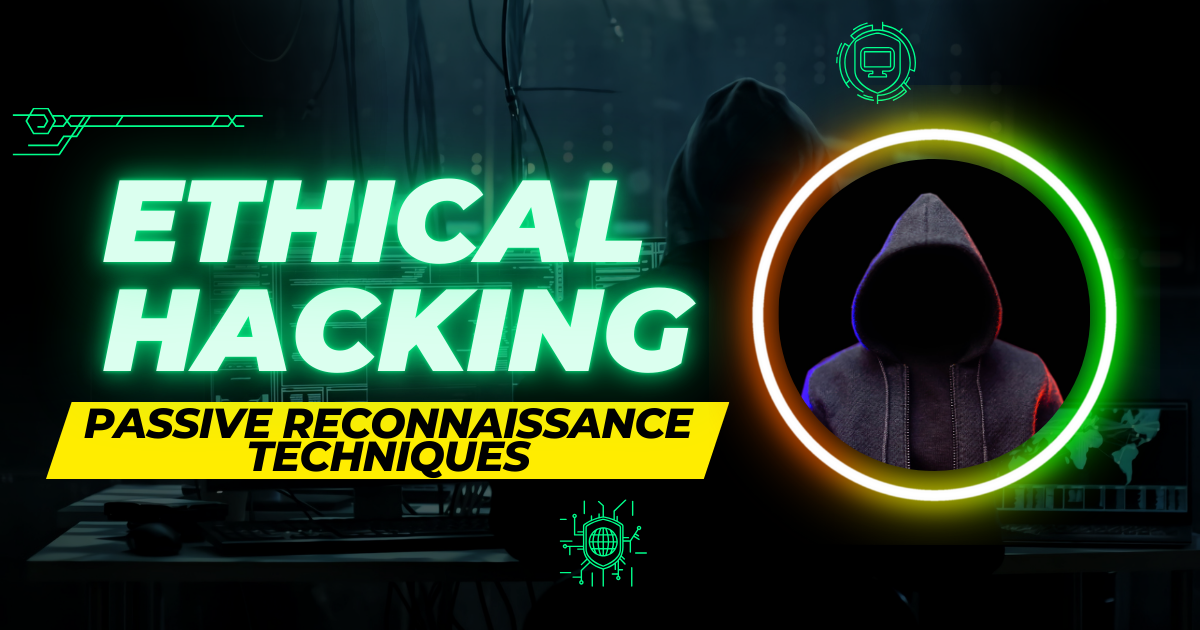Passive Reconnaissance Techniques: OSINT and Information Gathering
 Devyush Raturi
Devyush Raturi
In the initial stages of any ethical hacking engagement, gathering information without directly interacting with the target is crucial. This process, known as passive reconnaissance, minimizes the risk of detection and avoids triggering security alarms. Open Source Intelligence (OSINT) plays a pivotal role in this phase, allowing ethical hackers to build a comprehensive profile of their target. This article explores the techniques and tools used for passive reconnaissance and OSINT.
The Power of OSINT
OSINT involves collecting and analyzing publicly available information from various sources. This information can reveal valuable insights into the target's infrastructure, technologies, and vulnerabilities. The goal is to build a detailed picture without directly probing the target's systems.
Key OSINT Techniques
Search Engine Queries:
Leveraging advanced search operators (e.g.,
site:,filetype:,intitle:) to find specific information about the target.Example:
site:targetdomain.com filetype:pdf "confidential". This searches for PDF files on the target's domain containing the word "confidential."
WHOIS Lookup:
Retrieving domain registration information, including contact details, DNS records, and server information.
Tools like
whois(command-line) and online WHOIS lookup services provide this data.
DNS Enumeration:
Discovering subdomains, DNS server information, and other DNS records.
Tools like
dnsenum,sublist3r, and online DNS lookup services can automate this process.
Social Media Analysis:
Examining social media profiles of employees, partners, and the organization itself.
This can reveal information about technology usage, network connections, and potential vulnerabilities.
Careful analysis of LinkedIn, Twitter, and Facebook can be invaluable.
Company Website Analysis:
Analyzing the target's website for information about technologies used, employee directories, and contact details.
Examining the website's source code can reveal hidden information or vulnerabilities.
Public Databases and Repositories:
Leveraging public databases like Shodan, Censys, and VirusTotal to gather information about internet-connected devices and services.
These databases can reveal open ports, running services, and known vulnerabilities.
Code Repositories:
Analyzing code repositories such as GitHub and GitLab for accidentally exposed credentials, API keys, or other sensitive data.
Searching for the target’s name, or known employees can reveal useful information.
Document Metadata Analysis:
Extracting metadata from publicly available documents (PDFs, Word documents, etc.) to gather information about authors, software used, and creation dates.
Tools like
exiftoolcan be used for this purpose.
Google Dorking:
- Using advanced google search queries to find sensitive information that is accidentaly exposed to the internet.
Tools of the Trade
TheHarvester: Gathers email addresses, subdomains, and employee names from various sources.
Shodan/Censys: Searches for internet-connected devices and services.
DNSenum/Sublist3r: Performs DNS enumeration.
Maltego: A powerful OSINT tool for visualizing relationships between entities.
Recon-ng: A full-featured Web Reconnaissance framework written in Python.
Exiftool: a platform-independent Perl library plus a command-line application for reading, writing and editing meta information in a wide variety of files.
Ethical Considerations
Even though passive reconnaissance involves publicly available information, it's crucial to use this information ethically and legally.
Always obtain explicit permission before conducting any reconnaissance activities.
Respect privacy and avoid collecting sensitive information that is not relevant to the security assessment.
Documentation
Thorough documentation is essential during the passive reconnaissance phase. Record all findings, including URLs, IP addresses, domain names, and other relevant information. This documentation will serve as a valuable resource during subsequent testing phases.
Conclusion
Passive reconnaissance and OSINT are essential techniques for gathering information about targets without raising alarms. By leveraging publicly available information, ethical hackers can gain valuable insights into the target's infrastructure and identify potential vulnerabilities. This phase lays the groundwork for a successful and efficient security assessment.
Subscribe to my newsletter
Read articles from Devyush Raturi directly inside your inbox. Subscribe to the newsletter, and don't miss out.
Written by
